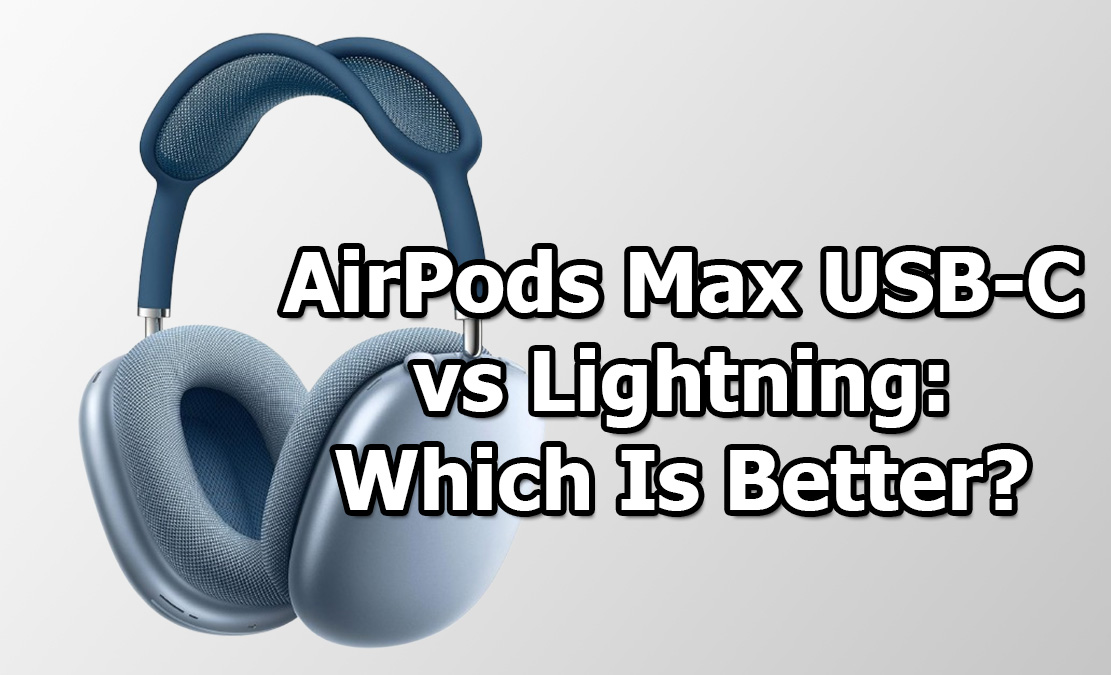The shift from Lightning to USB C for the AirPods Max marks a significant upgrade in terms of versatility and convenience. But how do these two compare, and which one ultimately reigns superior?

Click Here to Buy AirPods Max Now
Here’s a table comparing AirPods Max USB C and AirPods Max Lightning based on key features:
| Feature | AirPods Max USB-C | AirPods Max Lightning |
|---|---|---|
| Charging Speed | Faster, higher wattage | Slower compared to USB-C |
| Compatibility | Universal (USB-C devices) | Limited (Apple Lightning) |
| Audio Quality | Better high-fidelity audio | Standard quality |
| Durability | More rugged, reversible | Prone to wear, non-reversible |
| Future-Proofing | Standardized globally | Niche, fading out of use |
| Data Transfer | Faster transfer rates | Slower than USB-C |
Charging Speed and Efficiency
When comparing the charging capabilities, USB-C clearly outperforms Lightning. USB-C allows for faster charging due to its ability to handle higher wattages.
This means that with a quick charge, you can top up your AirPods Max more rapidly, ensuring that you’re back to enjoying your music or calls with minimal downtime. While Lightning charging is efficient, it doesn’t compete with the speed and future-proof nature of USB-C.
Universal Compatibility
One of the most notable benefits of USB C is its universality. As the standard charging port across most devices, from smartphones to laptops and even gaming consoles, USB C offers far greater compatibility than Lightning.
You can charge your AirPods Max with the same cable you use for your MacBook, iPad, or even an Android phone. The days of carrying multiple cables are over with USB C, which is especially useful for travelers or those who prefer simplicity in their tech setup.
On the other hand, the Lightning port, although iconic and reliable, has become more niche, primarily reserved for older Apple products.
If you’re deeply embedded in Apple’s ecosystem, this may not have been a huge inconvenience in the past, but as more of Apple’s products (such as the iPhone 15) make the shift to USB C, Lightning is becoming increasingly redundant.
Audio Capabilities and Data Transfer
USB C is also a more capable port when it comes to handling high-fidelity audio and faster data transfers.
With USB C, you can expect enhanced sound quality, especially when used in wired mode, making it a better choice for audiophiles who want to experience their music at the highest possible quality. The Lightning port, while adequate, lacks the same versatility for high-bandwidth audio.
Durability and Port Design
In terms of design and durability, USB C has the advantage. It’s a more rugged port with a reversible connector, making it easier to plug in regardless of orientation.
Lightning, while reliable, has been known to wear out more quickly due to its proprietary design and the fact that it requires careful alignment when plugging in.
Future-Proofing
With global trends pushing towards USB C as the universal standard (including mandates from the European Union), opting for the AirPods Max with a USB C port ensures your device will stay compatible with a wide range of current and future tech.
As more companies adopt USB C, Lightning ports are slowly being phased out, making it the less future-proof option.
Conclusion
When comparing AirPods Max with USB C to the previous Lightning version, the clear winner is USB C. Faster charging, improved compatibility, better audio potential, and future-proofing make USB C the superior choice for users who want their tech to be as efficient and versatile as possible.
While the Lightning version has served well, the transition to USB C is a welcome upgrade that brings the AirPods Max into the modern era of connectivity.
Also Check:
- AirPods Max USB-C: Finally here—why it’s a game-changer
- AirPods Max Not Connecting to Your iPhone? Here’s How to Fixed It in 5…
- Why Walmart is the Go-To Place for Your Roku TV Stick Purchase
- Meta Quest 3S Review: A Step Backward in VR Tech or an Affordable Game…
- Garmin Lily 2 Review: A Sleek Fitness Companion for Women, But Is It Enough?
